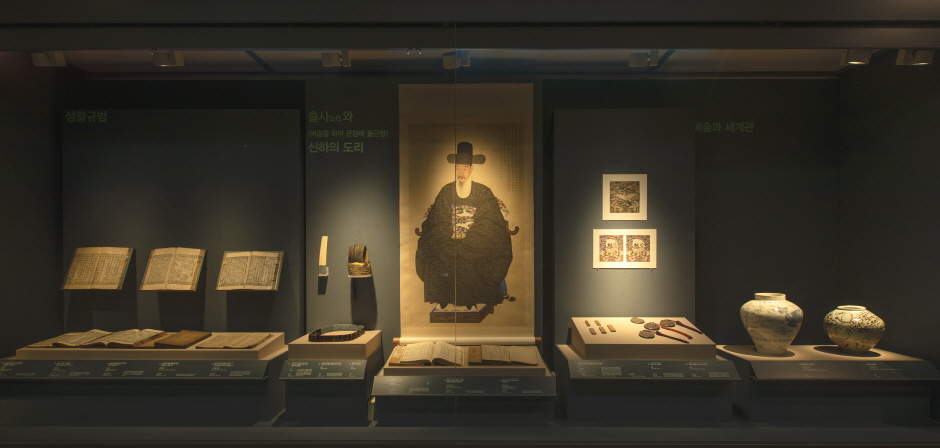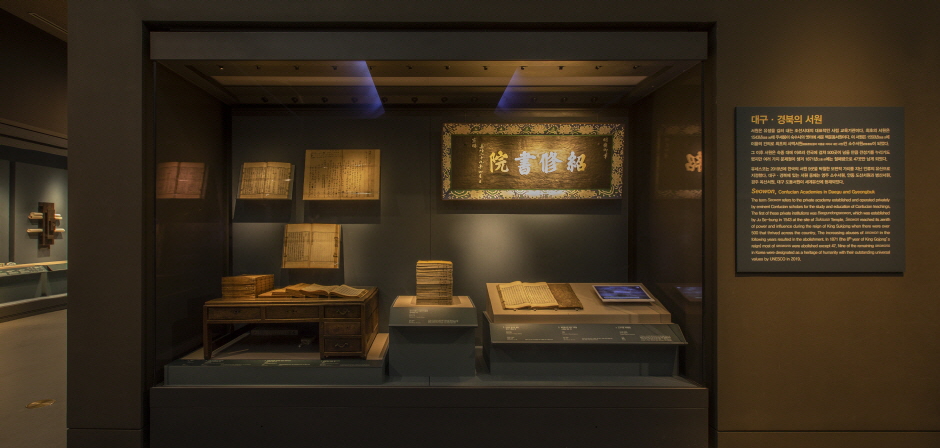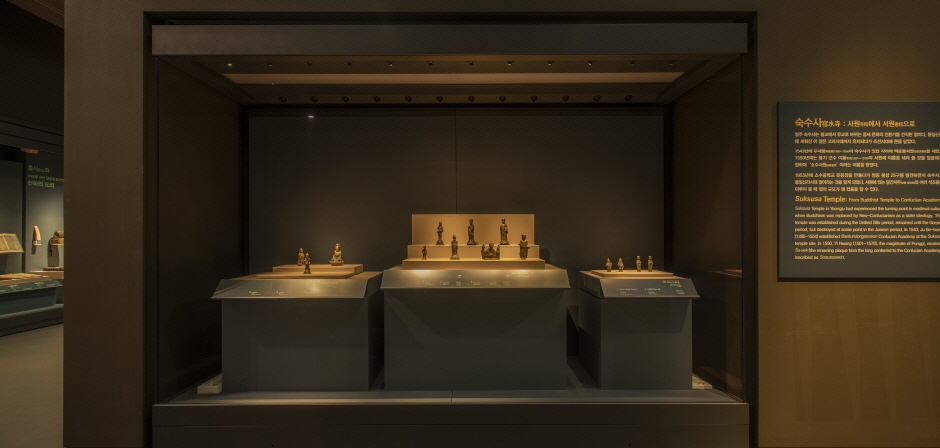Confucianism
This exhibition hall is dedicated to Buddhist and Confucian culture. It features Buddhist sculptures and crafts from the Three Kingdoms, Goryeo, and Joseon periods, and also explores the rise of Neo-Confucianism in the Joseon period, when some Buddhist temples were converted into Confucian private schools and Confucian scholars of the Yeongnam School became active in the area. The exhibits are organized to reflect the guiding Confucianist principle that, in order to properly govern a nation and bring peace to all, one must first be able to govern one’s family.
Confucianism
Duration
The first Confucian school officially designated by the king was Sosu Seowon (Confucian School) in Sunheung-myeon, Yeongju-si, Gyeongsangbuk-do. “Sosu” roughly translates to “restoring the neglected tradition of academic learning.” The school was built on the former site of Suksusa Temple, and was thereby indicative of the sweeping changes of the Joseon Dynasty, as Confucianism replaced Buddhism as the national doctrine. During the reign of King Jungjong (r. 1506-1544), Ju Se-bung (1495-1554) was appointed as the administrator of Punggi-gun. To honor the Goryeo Confucian scholar An Hyang (1243-1306), Ju erected a shrine called Baegundong Seowon and trained young Confucian scholars there. In 1550, at the request of Yi Hwang (1501-1570), who had been appointed as the administrator of Punggi-gun in 1548, King Myeongjong named the place Sosu Seowon, and made arrangements for the school to receive financial support from the state.
Featured Items
Buddhas

Portrait of An Hyang
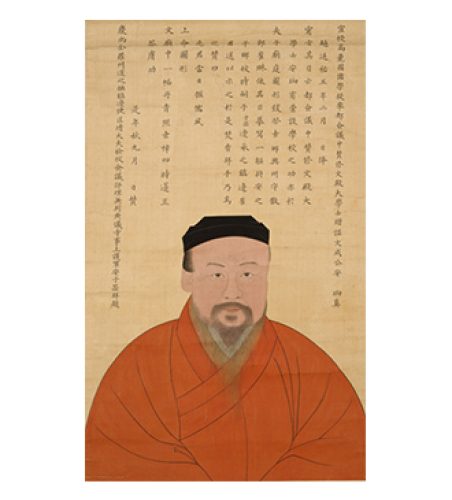
Tablet of Sosuseowon

Chronicles of Baegundongseowon Confucian Academy

Duration
In 1568, local Confucian literati built a shrine at the foot of Biseul Mountain in Hyeonpung-hyeon, in honor of the revered scholar Kim Goeng-pil (sobriquet: Hanhwondang). The shrine was originally called Dodong Seowon, but in 1573, King Seonjo granted it the official title of Ssanggye Seowon. The shrine was destroyed by fire in 1597 during the Japanese invasion, and then rebuilt in 1605 at a new location and renamed Borodong Seowon. Then in 1607, King Seonjo officially changed the name back to Dodong Seowon, now recognized as Korean Historic Site 488. In the late Joseon Dynasty, Heungseon Daewongun ordered that all Confucian schools be shut down, but Dodong Seowon was one of forty-seven major Confucian schools that were not affected by the order.
Featured Items
Rubbing from the Memorial Stone for Kim Goeng-pil
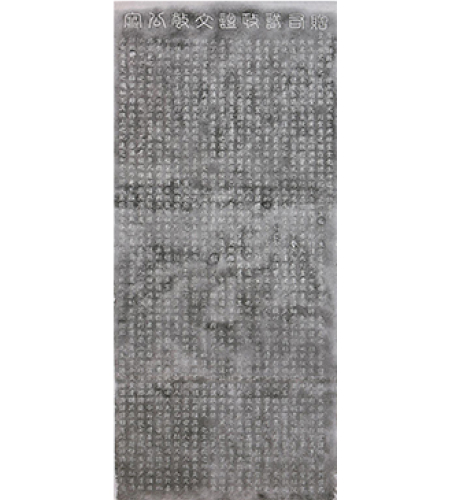
Vernacular Translation of Xiaoxue (Elementary Learning)
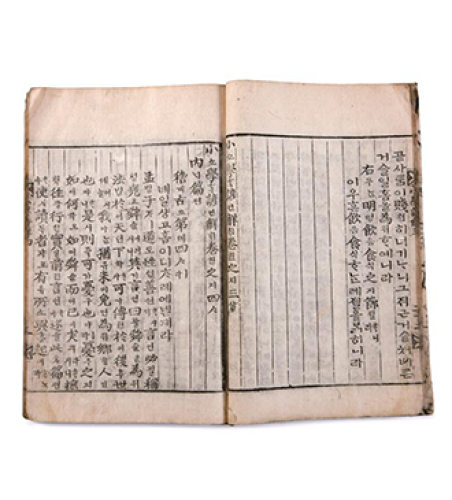
Biography and Collected Works of Kim Goeng-pil
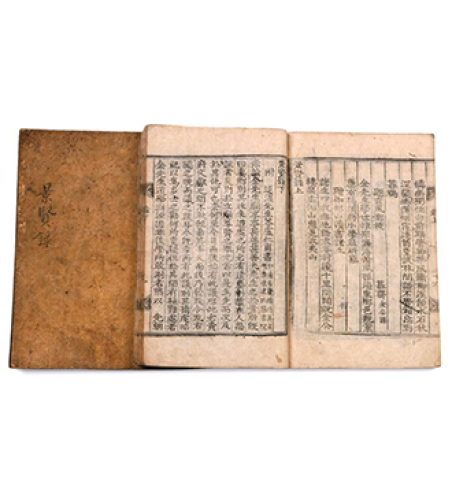
Duration
During the Joseon period, Yeongnam had the most active Confucian scholars of any region. During the sixteenth century, Yeongnam scholars often suffered exile or worse as a result of political disputes. Local scholars such as Kim Jong-jik, Jeong Yeo-chang, Kim Goeng-pil, Yi Eon-jeok, Yi Hwang, and Jo Sik led political movements against relatives of kings who wielded too much power.
During the Joseon period, the activities of Confucian scholars were mainly centered around the seowon (Confucian schools). Seowon served a variety of important functions, as shrines to pay homage to ancestors, as private schools for training young scholars, and as venues for discussing social and political problems.
Featured Items
Collected Works of Kim Jong-jik
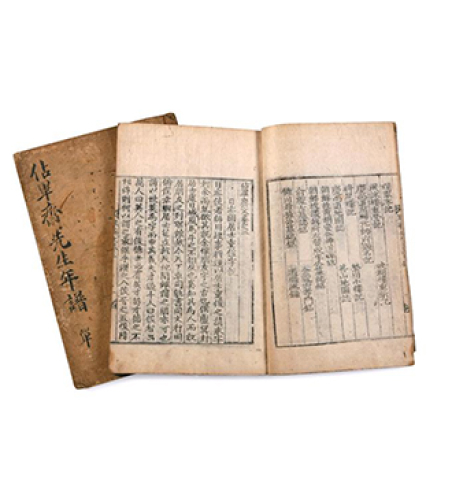
Collected Works of Yi Eon-jeok

Collected Works of Jeong In-hong

Duration
Seonbi (Confucian scholars) were dedicated to self-cultivation based on the moral and philosophical tenets of Confucianism, and also to enlightening others. They strove to enhance their moral sensibility through self-discipline and the study of Confucian scriptures containing the teachings of ancestors. They also left behind many excellent poems, writings, and paintings reflecting their attitude of serenity towards nature and human life. Such works display the idealism and spirituality pursued by Confucian scholars.
Featured Items
Seven Chinese Classics

Jinsilu (Reflections on Things at Hand)

Studies on Xinjing (Classic of the Mind-and-Heart)
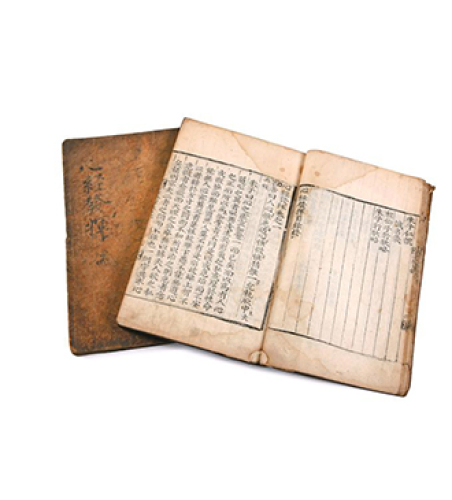
Calligraphy of Yi Hwang

Painting of Plum Blossom by Oh Dal-je
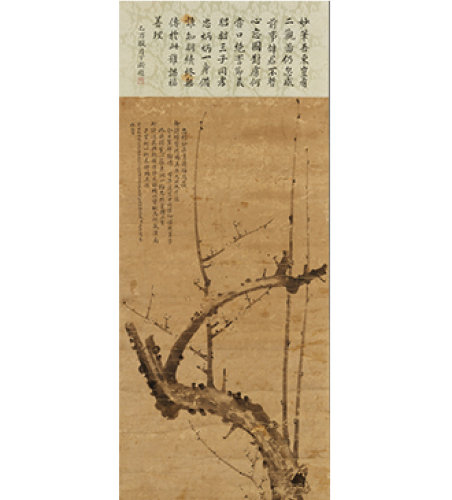
Personal Items of the Men's Quarter (Brush Stand, Brush Rest, Water Dropper, Inkstone)

Duration
In Confucianism, the foundation of all ethical principles is family. Benevolence and righteousness—the core values of Confucian ethics—can be obtained through respect for one’s parents and elder siblings. Social and political values are considered to be extensions of family ethics, so priority is placed on family management as the basis for proper rule and governance. Towards the end of the Goryeo period, Zhu Xi’s Family Rituals was introduced to the country, serving as the foundation for the rise of Neo-Confucianism, which became prevalent in the ensuing Joseon period. Confucian scholars took their fundamental principles from Zhu Xi’s treatise, and distributed the text throughout the country. Thus, Family Rituals came to represent the rules and standards of everyday life for all the people, commoners and nobility alike.
Featured Items
Records on Sacrificial Rite of National Shrine to Confucius

Collected Commentaries on Zhuzi jiali (Family Rites of Zhu Xi)
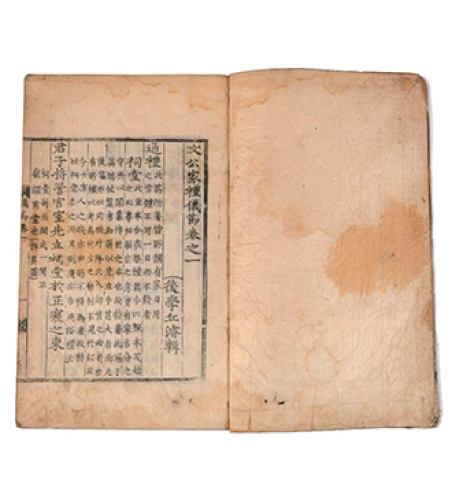
Inquiry into the Four Rites
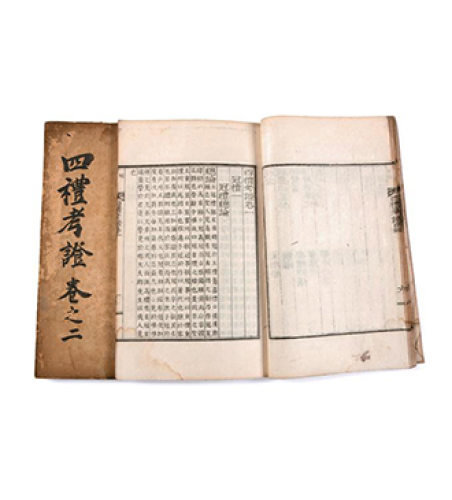
Essentials of Funerary Rites
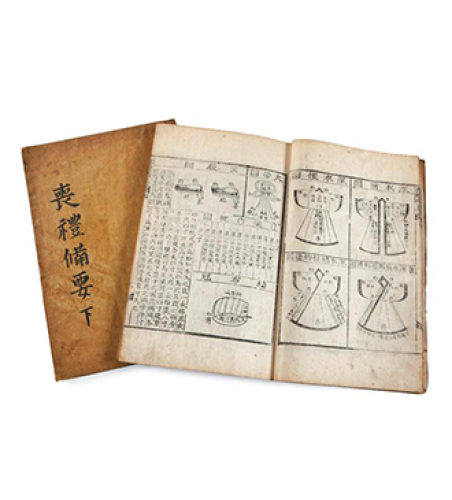
Celebration of the Sixtieth Anniversary of Wedding
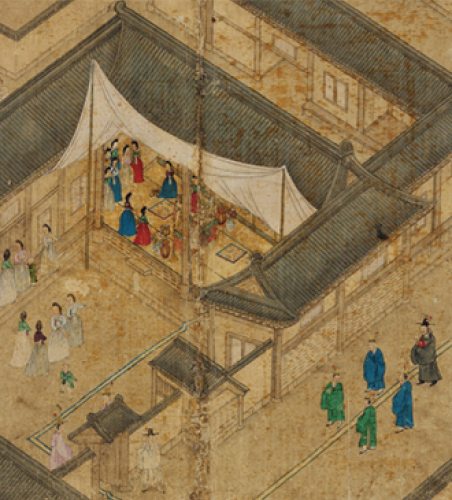
Ancestral Tablet Chamber
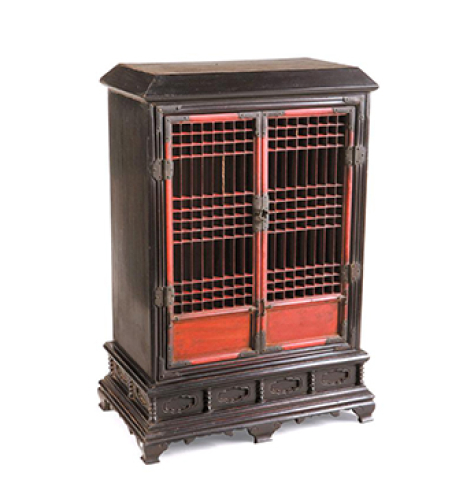
Ancestor Seat

Duration
Confucianism encompasses the view that social problems can only be solved if people pursue morality in their individual lives. This sense of morality was imposed on the king and the nobility more strictly than on the general populace. On the basis of Confucian doctrine, Joseon kings made great efforts to maintain sound relationships with high-ranking officials, and they worked to enact measures to properly and effectively rule the country. Confucian scholars considered it their ultimate duty to complete their morality through their studies and then put those morals into social practice as government officials. Hence, young Confucian scholars typically aspired to pass the state-administered examinations and obtain a post as a political official.
Featured Items
Illustrated Guide to the Five Confucian Virtues
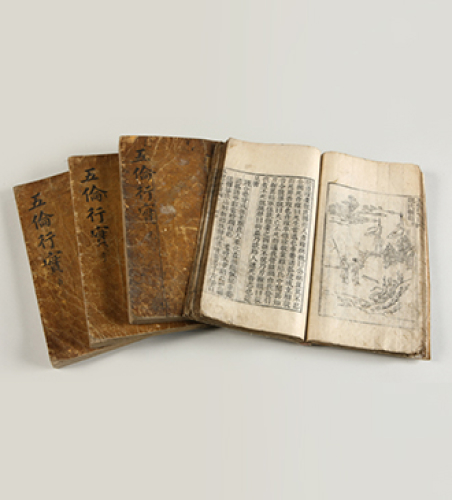
Official Notice of Successful Candidates List in Licentiate Examination of 1895
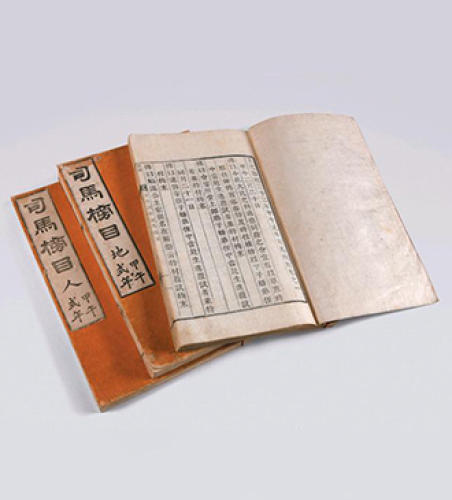
Crimson Certificate

Horse Passes
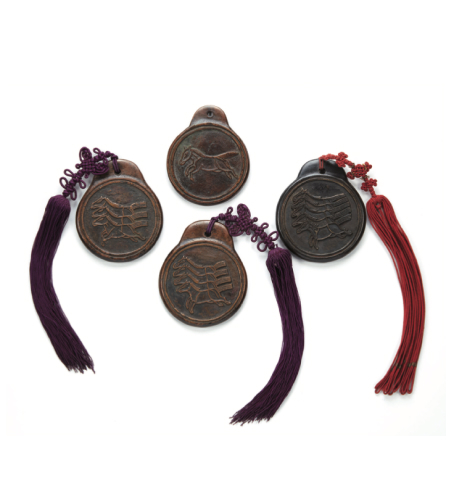
Identification Tags
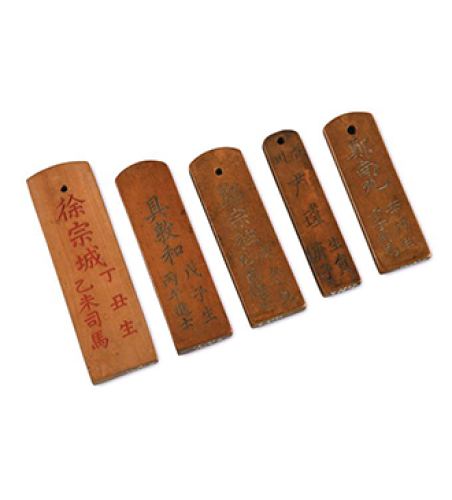
Portrait of Seo Mae-su


